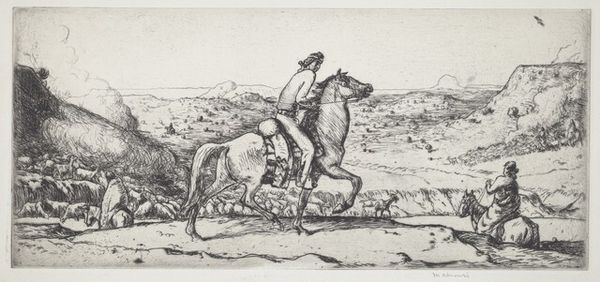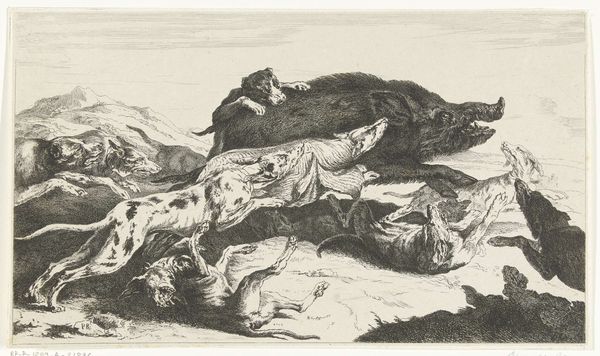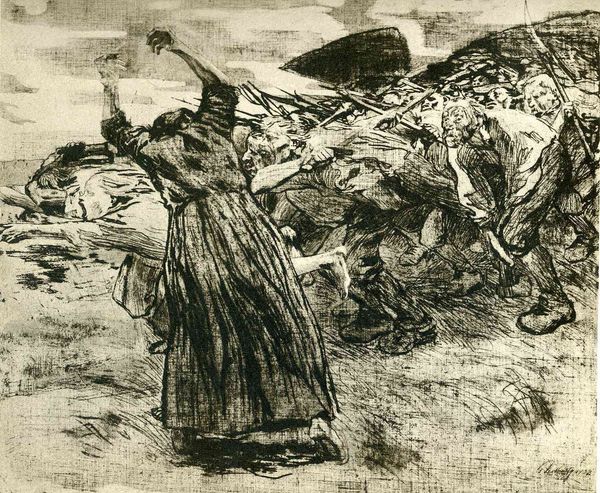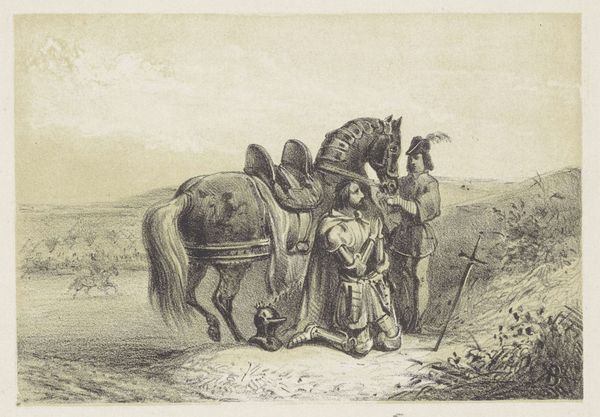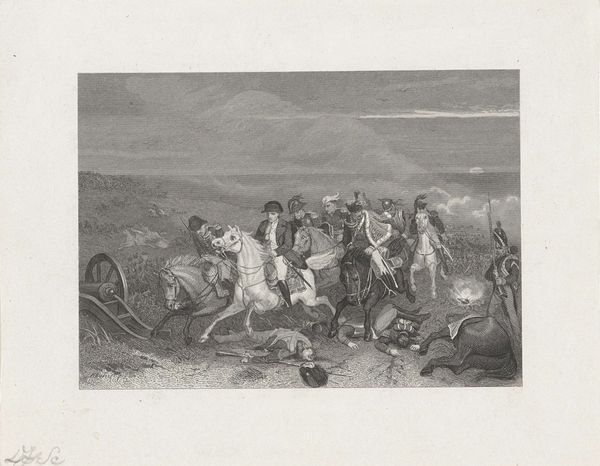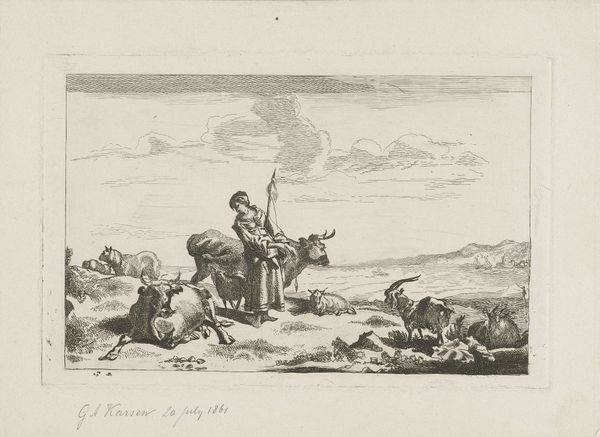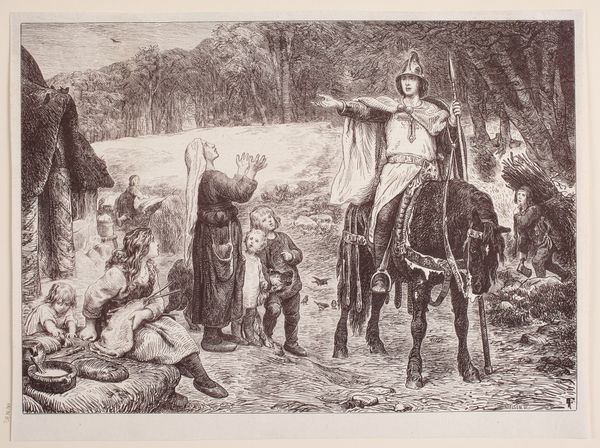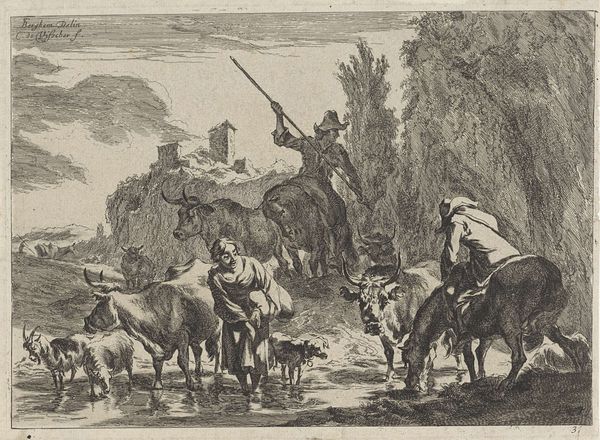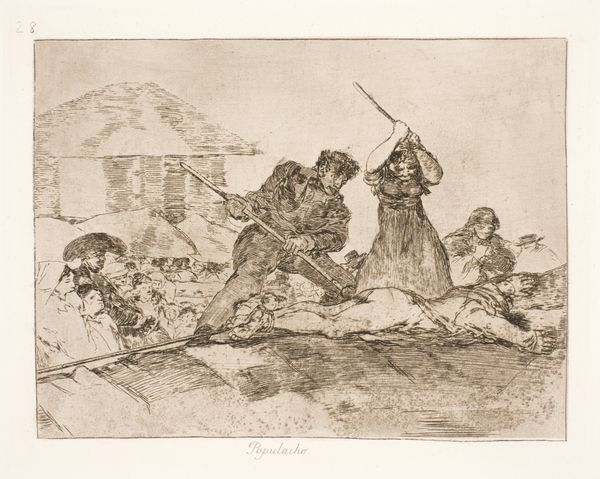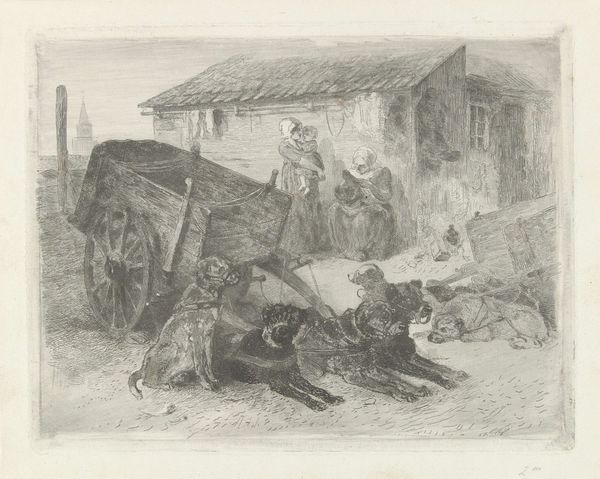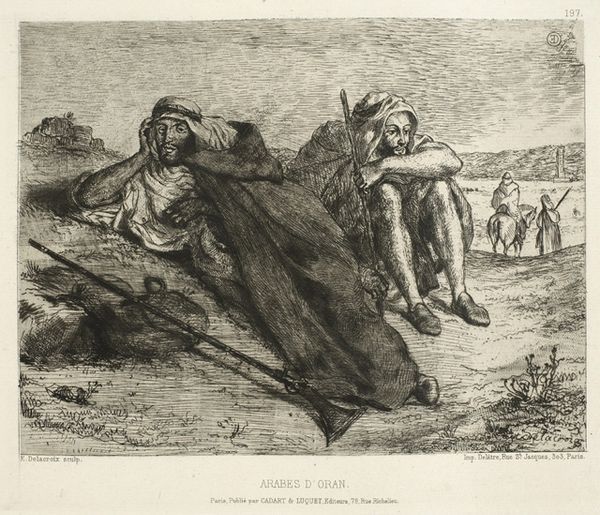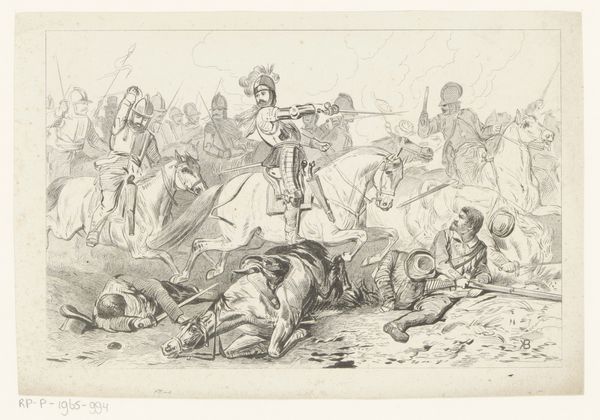
print, etching
# print
#
etching
#
pencil sketch
#
landscape
#
figuration
Dimensions: plate: 203 x 304 mm sheet: 322 x 429 mm
Copyright: National Gallery of Art: CC0 1.0
Editor: This is "After the Buffalo Hunt," an etching created around 1917 by Edward Borein. The scene depicts the aftermath of a hunt, with several figures around fallen buffalo. It feels...bleak. What stands out to you in this piece? Curator: It's compelling to consider Borein's portrayal within the context of early 20th-century romanticism of the American West. The romanticism certainly comes with problematic implications. What isn't displayed are the realities faced by indigenous populations during that time because of the buffalo hunts, not of their own will. The imagery itself isn't without historical or cultural weight. Notice the scale of the buffalo relative to the human figures. Does this affect your interpretation? Editor: It definitely emphasizes the magnitude of the loss, both for the animals and likely for the culture that depended on them. Was Borein aware of that weight, do you think? Curator: It's difficult to say definitively. Borein lived and worked in a period where the romanticized view of the “vanishing race” was popular. This contributed to policies of forced assimilation. His work, seen through that lens, becomes less a celebration of a culture and more a documentation of a perceived inevitable decline. What role do you think artwork like this played in shaping public perception? Editor: That’s a really interesting point, that the art itself contributed to this false narrative. It probably served to reinforce existing prejudices and a lack of understanding. So even seemingly ‘historical’ art has to be looked at critically? Curator: Precisely. It shows us how art can unintentionally play a role in larger sociopolitical narratives, whether intended by the artist or not. Understanding that helps us interpret these works with far more nuance and sensitivity. Editor: I never would have thought of that on my own. This etching now carries a very different significance for me. Curator: And hopefully a deeper understanding of the complex interplay between art, history, and cultural narratives.
Comments
No comments
Be the first to comment and join the conversation on the ultimate creative platform.
